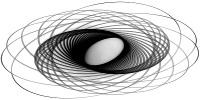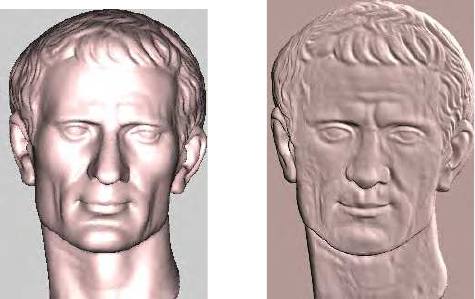J. Wu, R. R. Martin, P. L. Rosin, X-F. Sun, F. C. Langbein, Y.-K. Lai, A. D. Marshall, Y.-H. Liu. Making Bas-reliefs from Photographs of Human Faces. Computer Aided Design 45(3):671-682, 2013. [DOI:10.1016/j.cad.2012.11.002] [PDF]
Bas-reliefs are a form of flattened artwork, part-way between 3D sculpture and 2D painting. Recent research has considered automatic bas-relief generation from 3D scenes. However, little work has addressed the generation of bas-reliefs from 2D images. In this paper, we propose a method to automatically generate bas-relief surfaces from frontal photographs of human faces, with potential applications to e.g. coinage and commemorative medals. Our method has two steps. Starting from a photograph of a human face, we first generate a plausible image of a bas-relief of the same face. Secondly, we apply shape-from-shading to this generated bas-relief image to determine the 3D shape of the final bas-relief. To model the mapping from an input photograph to the image of a corresponding bas-relief, we use a feedforward network. The training data comprises images generated from an input 3D model of a face, and images generated from a corresponding bas-relief; the latter is produced by an existing 3D model-to-bas-relief algorithm. A saliency map of the face controls both model building, and bas-relief generation. Our experimental results demonstrate that the generated bas-relief surfaces are smooth and plausible, with correct global geometric nature, the latter giving them a stable appearance under changes of viewing direction and illumination.
![]() This work is licensed under a Creative Commons Attribution-NonCommercial-ShareAlike 4.0 International License.
This work is licensed under a Creative Commons Attribution-NonCommercial-ShareAlike 4.0 International License.

